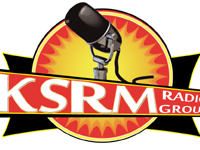A ‘shovel test’ was conducted with crews from HDR Engineering at a Dena’ina cultural site located within the Sterling Highway Milepost 45-60 project in June as members with the Kenaitze Indian Tribe worked as cultural observers on the massive construction job. The project will upgrade the highway between the Sunrise Inn and the eastern entrance to Skilak Lake Road. In the most recent bimonthly Tribal newsletter, the Counting Cord, an archeological crew recently found a piece of agate while excavating a site near Cooper Landing.
Ruby Willoya-Williams, Lead Cultural Coordinator for the Sterling Highway Milepost 45-60 Project said in the Counting Cord:
“It’s a beautiful piece of agate found in an isolated area. I like to wonder, what they would have traded for that? How long did they hang on to it? What they would have used it for, and did they think it was a lucky stone?”
According to the publication, the Sterling Highway passes through the Sqilantnu Archeological District, which is a culturally rich area around the confluence of the upper Kenai and Russian rivers. Archeological records show Dena’ina people arriving in Sqilantnu, which means ‘ridge place river,’ more than a thousand years ago. At least four other Alaska Native Cultures inhabited the area for 5,000 years before that.
Environmental studies, engineering and public involvement studies were conducted from 2000 to 2018 with construction beginning in 2020. The project calls for construction of 10 miles of new roadway north of Cooper Landing, including a new bridge across Juneau Creek Canyon. The road at both ends of the project will be reconstructed with wider shoulders, passing lanes, pathways, and wildlife crossings.
Virginia Wolf, a Tribal Council Member who has served as the Tribe’s liaison to the Alaska Department of Transportation and other state and federal agencies involved in the project said:
“Where they’re building the new highway, it’s affecting (historic Dena’ina) cache pits, and house sites, and travel corridors – they used to mark trails by marking the trees – so it’s important for us to categorize the things we’re finding. Being involved in the project also enables the Tribe, if a burial is found, to collect the remains and ensure they are placed somewhere they can rest in peace, and not under a highway.”
In the publication, Wolf added that involvement in the project enables the Tribe, if a burial is found, to collect the remains and ensure they are placed where they can rest in peace, and not under a highway.
Discoveries during the 2021 construction season included hearth features and cache pits, including one lined with birch, and faunal remains. Data recovery crews additionally have found chipped stone flakes and tools, such as stone ulus.
Anything found during the excavations are sent to the Museum of the North at the University of Alaska Fairbanks, where they are recorded and catalogued by researchers.
Click here to read the publication.
